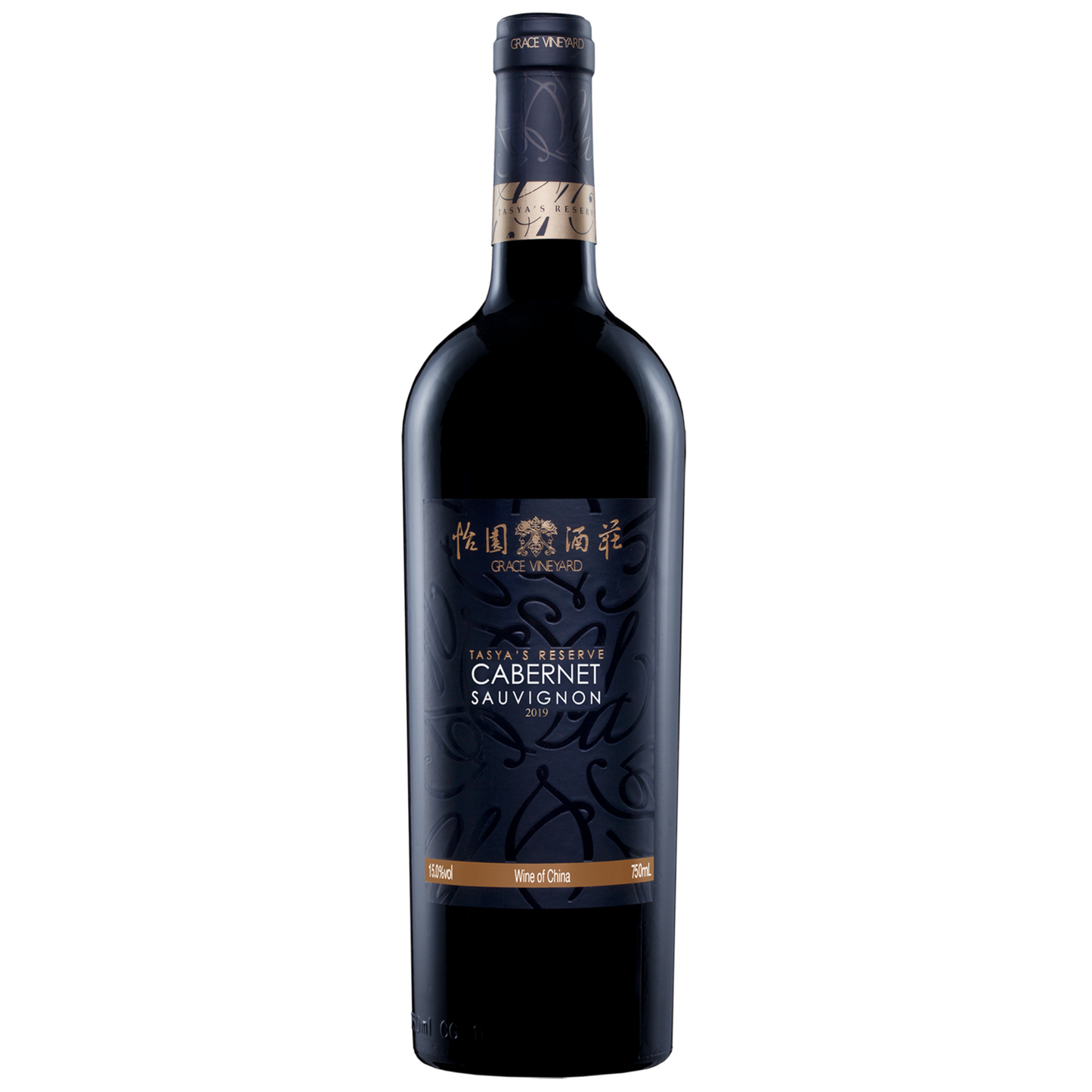Grace Vineyard Tasya's Reserve Cabernet Sauvignon 2017
Grace Vineyard Tasya's Reserve Cabernet Sauvignon 2017
Vintage: 2017
Volume: 750ml
Country: China
Region:
Grapes: 100% Cabernet Sauvignon
ABV: 15%
Scores:
Product Code: CNGRCRWCS2017ST004
Couldn't load pickup availability
Winery Background and History
Grace Vineyard, established in 1997, is a family-owned winery located in Taigu County, Shanxi province, China. The continental climate on the loess plateau, characterized by distinctive seasons, dry sandy loam soil, minimal rainfall, abundant sunshine, and a wide diurnal temperature range, provides an ideal environment for producing premium quality wines. Over the years, Grace Vineyard has garnered international acclaim from critics such as Jancis Robinson and James Halliday, as well as publications like Wine Spectator and Decanter. The “Tasya’s Reserve” series is named after the founder’s granddaughter, Anastasya, symbolizing the family’s commitment to excellence across generations.
Producer and Winemaker
The chief winemaker at Grace Vineyard is Lee Yean Yean. Originally from Malaysia, Lee began his career in 2000, working in wine retail and the restaurant industry. He joined Grace Vineyard in 2006 as a cellar hand and progressed to assistant winemaker. Lee has also gained experience at Curly Flat and Brown Brothers wineries in Victoria, Australia, enhancing his winemaking expertise.
Vineyards and Micro Climate
Grace Vineyard’s estate is situated in Taigu County, approximately 40 kilometers south of Taiyuan, the capital of Shanxi province. The vineyards benefit from a continental climate on the loess plateau, which offers distinctive seasons and a dry, sandy loam soil composition. The region experiences minimal rainfall and abundant sunshine, contributing to optimal grape ripening conditions. A significant feature of this area is the wide diurnal temperature variation, which enhances the development of grape flavors and acidity balance. These unique climatic and soil conditions enable Grace Vineyard to cultivate high-quality grapes, resulting in wines with depth and complexity.
Grape Varietals & Percentage Used
The 2017 Tasya’s Reserve is crafted from 100% Cabernet Sauvignon grapes.
Vinification & Aging Methods
The winemaking process for the 2017 Tasya’s Reserve Cabernet Sauvignon begins with destemming and lightly crushing the grapes into stainless steel tanks. Fermentation occurs at relatively low temperatures, with an extended period of skin contact to enhance color and flavor extraction. Following fermentation, the wine is aged for up to 15 months in a combination of 10% new oak barrels and older oak barrels (first, second, and third use 225-liter barrels). Minimal fining is conducted, and only a polished filtration is applied prior to bottling, preserving the wine’s natural characteristics.
ABV (Alcohol by Volume)
The 2017 vintage has an alcohol content of approximately 15.0% ABV.
Tasting Notes
This wine exhibits a dark red color with a crimson hue. The nose presents forward notes of dark currant and red cherries, accompanied by light herbal tones and spicy cloves. On the palate, it is well-textured, featuring finely layered tannins and balanced acidity. The body is full, backed with ample fruitiness and density.
Food & Wine Pairing
The 2017 Tasya’s Reserve Cabernet Sauvignon pairs well with dishes such as roasted lamb, beef tenderloin, or venison. It also complements rich, savory dishes like mushroom risotto or aged cheddar cheese, enhancing the wine’s nuanced flavors.
Service Methods and Temperatures
To fully appreciate its aromatic complexity, serve this wine at a temperature of 16-18°C (60-64°F). Decanting for about 30 minutes prior to serving can help open up its bouquet and soften the tannins, enhancing the overall tasting experience.
Storage and Aging Potential
The 2017 Tasya’s Reserve Cabernet Sauvignon has the potential to age gracefully for 8-10 years under proper cellaring conditions. As it matures, the wine is expected to develop further complexity, with tertiary flavors emerging and the tannins becoming more integrated, offering an even more refined drinking experience.
Share


